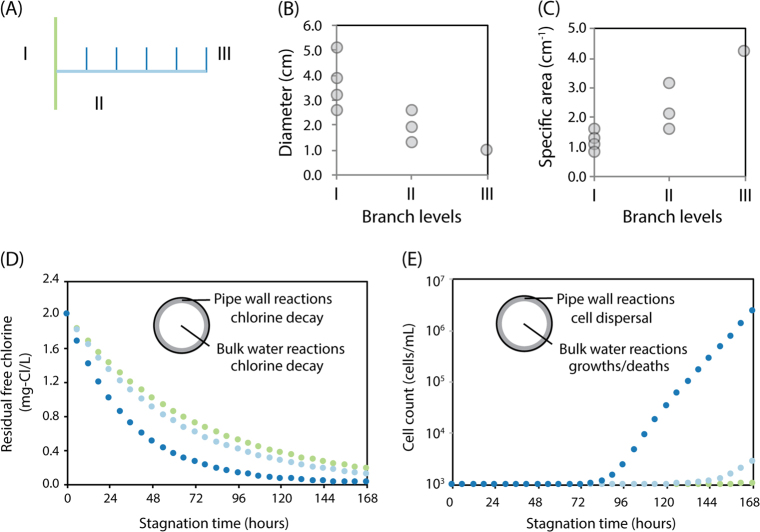Fig. 3.
A reaction kinetics model for microbial dispersal and disinfectant decay predicts that smaller pipe diameters favor higher dispersal from biofilms and longer sub-inhibitory disinfectant exposure. a Branch levels from proximal to distal branches. b Pipe diameters from buildings surveyed in this study vary by branch levels. c Specific area of pipes varies by branch level. d Dynamic profiles of free chlorine (sodium chlorite) concentration simulated for branch level I, II, and III within one floor show an increased overall decay rate in narrower (distal) pipes. e Cell count dynamics simulated from dispersal and growths/deaths shows faster overall increase in narrower (distal) pipes

